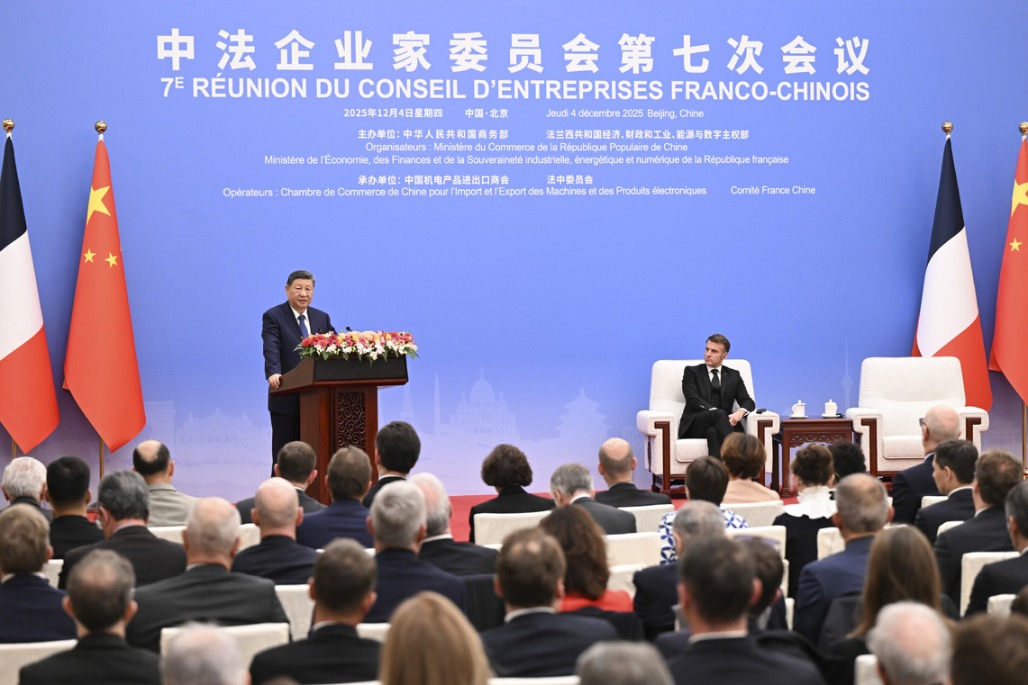Chinese companies need better branding
By Liu Yinmeng in Las Vegas | China Daily | Updated: 2020-01-10 09:32

Entrepreneur Wu Yuli, who has been attending the 2020 Consumer Electronics Show, or CES, for several years as an exhibitor, noticed a strange phenomenon faced by her fellow Chinese exhibitors at the event in Las Vegas.
Representatives of ODMs, or original design manufacturers, would often come by an area where a group of Chinese exhibitors were gathered. The representatives asked if they wanted their services, said Wu, who heads WE. LOCK, a Shenzhen-based manufacturer of AI locks.
"At present, China's development in 'smart manufacturing', production processes and software technology is no less progressive than any other countries, but some Chinese companies still cannot gain global recognition. I think the biggest factor has to do with our lack of brand awareness, or expertise in brand communication," she said.
CES, the world's largest technology show, draws tens of thousands of spectators every year. This year, 175,000 industry professionals, including 61,000 from outside the US, have convened in Las Vegas to showcase their latest products.
While Chinese innovations serve as a beacon for the country's role as an emerging tech leader, many Chinese companies, especially smaller firms, still find it hard to compete with global rivals due to subpar marketing strategies, some show exhibitors told China Daily.
CES exhibitors from China have made their presence known in various fields such as 5G, smartphones, the internet of things, autonomous vehicles, robotics, home appliances and digital health.
Representatives from around 1,100 Chinese mainland companies made the trip to CES this year. The Chinese vendors account for nearly a quarter of the show's exhibitors.
They include well-known Chinese household names such as TCL, Huawei and Lenovo, as well as startups.
"Forty years after the beginning of China's reform and opening-up, China's supply chain, manufacturing chain, as well as its talent pool, have probably grown to the top position in the world," said Wu Peng, general manager of marketing and sales at Dreame Technology, a Tianjin-based company that specializes in smart household appliances."Along with the development of these basic infrastructures, Chinese brands have become very competitive in the world."
Amy Zhang, public relations manager at Robosea, a Beijing company that specializes in underwater drones and technologies, said a major challenge when it comes to promoting products is consumers' lack of familiarity with underwater activities.
The research firm Kantar Millward Brown noted that young consumers, unlike some of those older generations with negative receptions of Chinese brands, are becoming more receptive to "Made in China" products, as innovative brands like drone maker DJI continue to gain revenue and following internationally.
In its 2018 report, Kantar Millward Brown listed Lenovo, Huawei, Alibaba, Xiaomi and Air China as the top five Chinese companies establishing "Brand China" as innovative, cutting-edge and pioneering.
The report also notes several challenges faced by Chinese sellers even as they make headway in the global market, namely a lack of brand-building investment and limited brand awareness among targeted segments of clients.
Chinese brands need to overcome people's negative perceptions about the products' durability and safety by improving the perception of trust, the report said.
Chen Junxun, principal consultant at Momentum Digital, a digital agency specializing in B2B digital strategy and content marketing, also noted the importance of establishing a good brand for Chinese sellers who want to succeed overseas.
However, Patrick Santucci, senior communications manager at DJI, who lauded his company for "being at the forefront of creating drone technology", explained that marketing Chinese products in foreign countries such as the US presents unique challenges.
"The (Chinese) culture is very different. I think there's a learning curve coming from China, to try to market in the US. It's very different. Maybe it's just the learning curve in terms of how to adapt your marketing to the US or Europe, because it's extremely different from China and a lot of the Asian countries," he said.
























